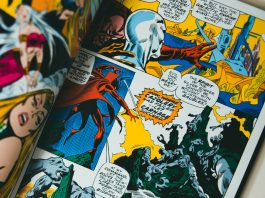Last updated on July 19th, 2021 at 12:19 pm
What is PPI?
PPI, or pixels per inch, is the amount of pixels that get printed (horizontally and vertically) in a 1 inch line. Therefore, a square inch of print at 300 PPI will consist of 90,000 pixels. The higher the PPI, the clearer your image will be because the pixels will be denser. Thus, a higher PPI design will look better because of the higher clarity of the image.
300 PPI: The Magic Number
300 PPI is considered the ideal pixel density for printing because at 300 PPI, a pixel is just barely discernible to the human eye. Any higher of a pixel density would be unnecessary because the human eye would not be able to tell the difference. Any lower, and the human eye will be able to see the pixels easier because they will be larger. An image is said to be pixelated when the pixels are so discernable that the image looks undesirable due to having too low of a resolution. Lower PPI prints will not look as good because of this pixelation.

Make Sure Your Design Programs Are Set To 300 PPI Before Designing

Often times, design programs will not have their settings set to 300 PPI by default. For instance, in Adobe Photoshop, if you start a new project, the default setting for resolution is 72 PPI. If you wait until after the design has already been done to change to 300dpi, the design will just be upconverted to 300 PPI, but still print as if it was designed at 72 PPI.
Source Images Need To Be 300 PPI: Upconverting Doesn’t Count
It is crucial that the images you design in your files are 300ppi after cropping and resizing. As an example, let’s say you have a 1000×1000 pixel image, and you want it to take a 5”x5” area of your print. 1000 pixels over 5 inches is only 200 pixels per inch, or 200 PPI, which is lower than the recommended 300 PPI. Even though your design might be set to 300 PPI, and the program upconverts the image to 1500×1500 to appropriately be 300 PPI, it doesn’t matter, because the source picture was still only 1000×1000. The most common cause of this problem is when images and logos are pulled from the internet.
Design At 300 PPI And Your Prints Will Look Professional
If you design at 300 PPI, your prints will look very professional because of the resolution and the clarity. If your designs are lower than 300 PPI, then you run the risk of your designs looking pixelated. A designer must realize that the actual design is the most important factor in printing out high quality, professional prints, and designing at 300 PPI is one of the biggest factors in good design.

Shop Saddle Stitch Booklets at Printivity 
Shop Folders at Printivity 
Shop Postcards at Printivity




